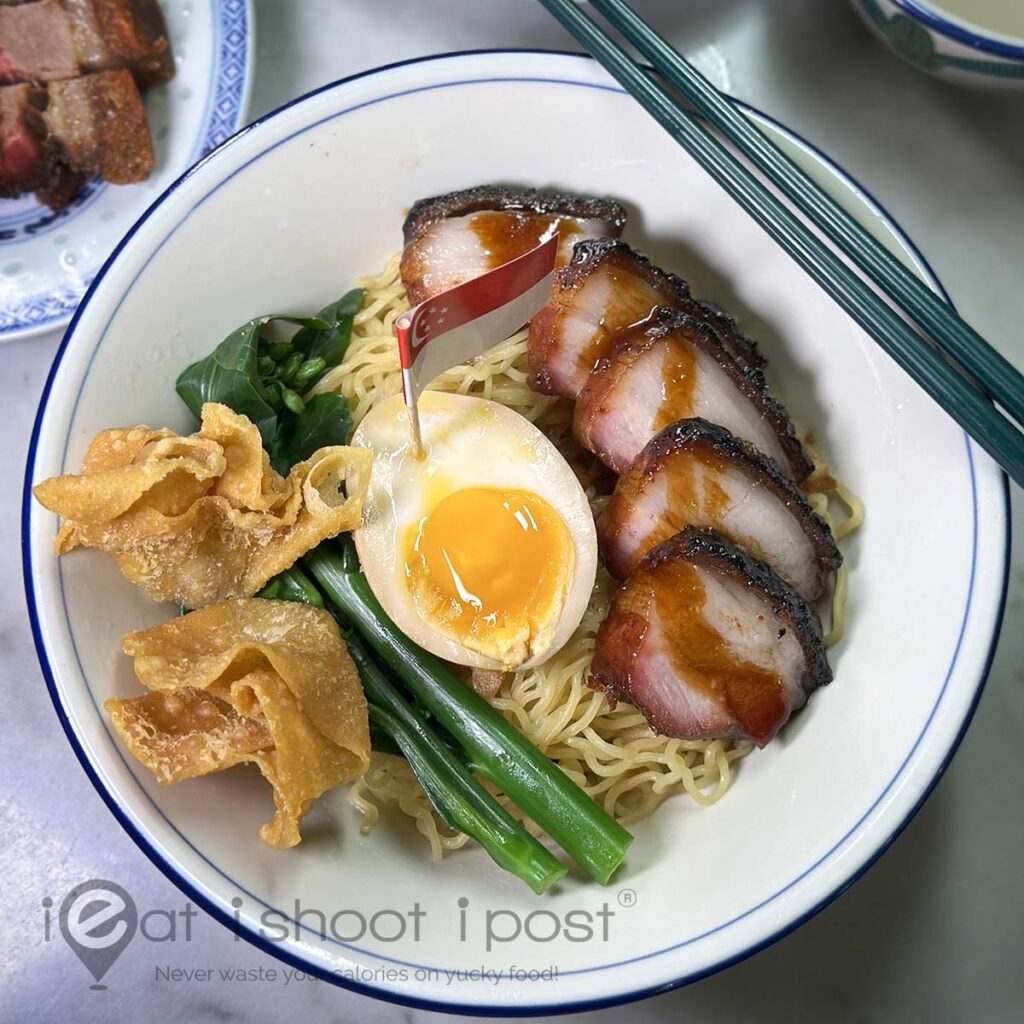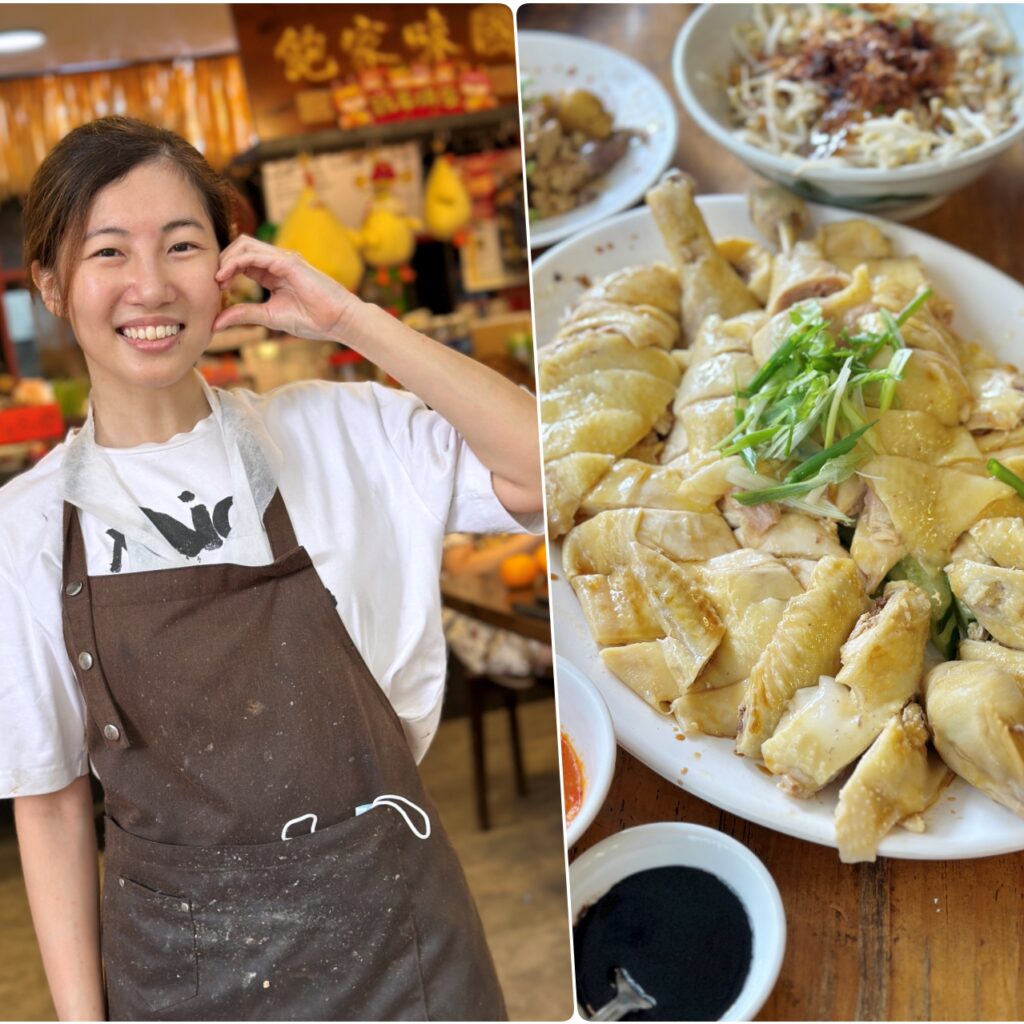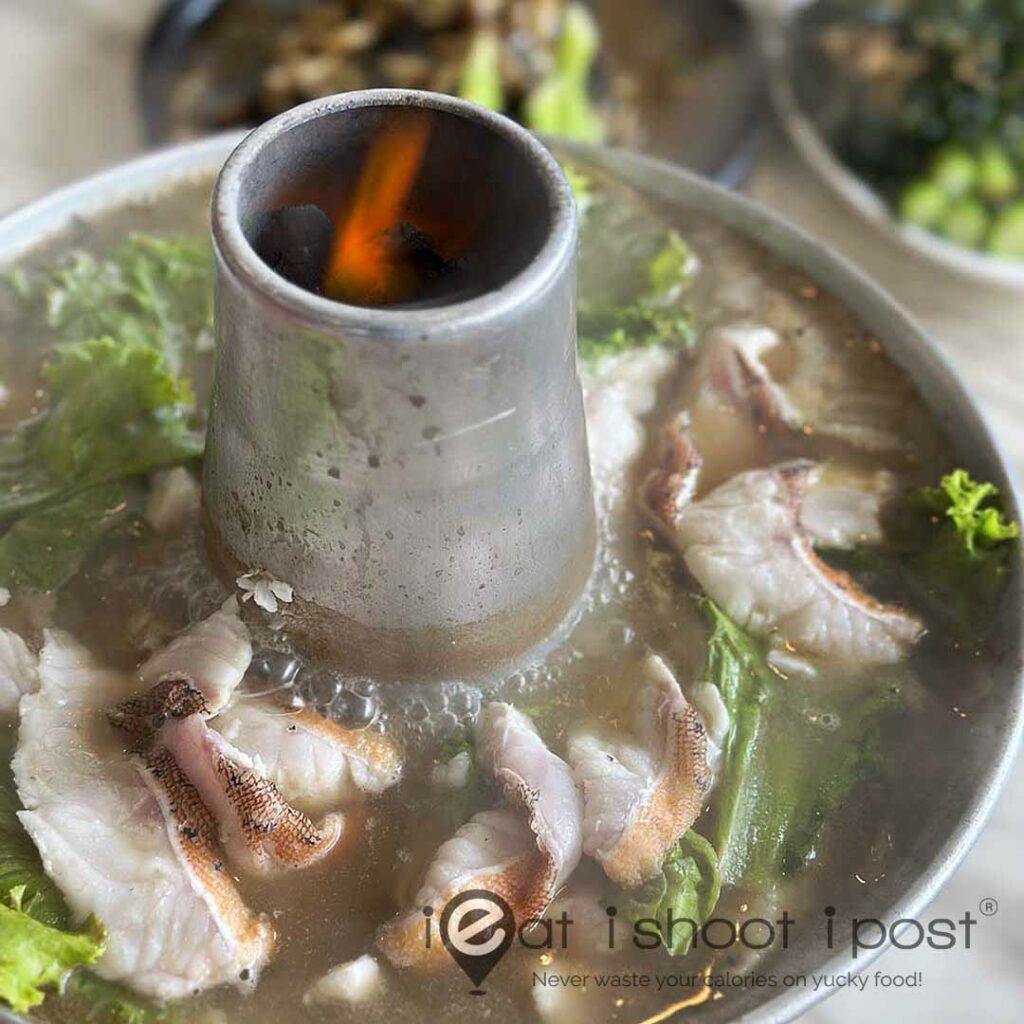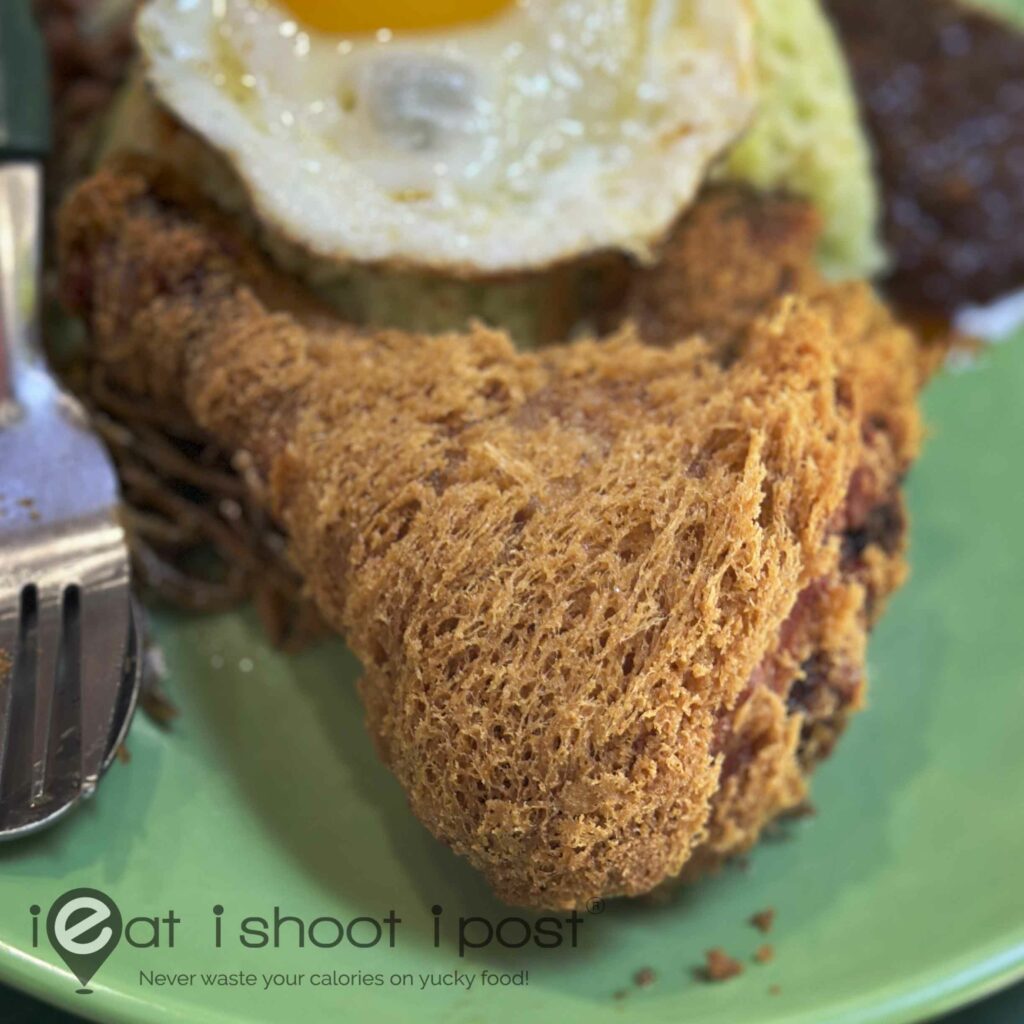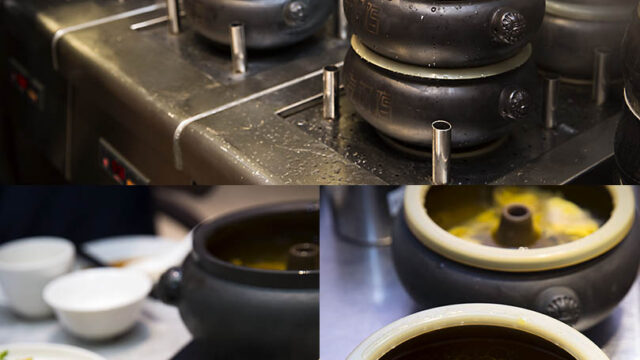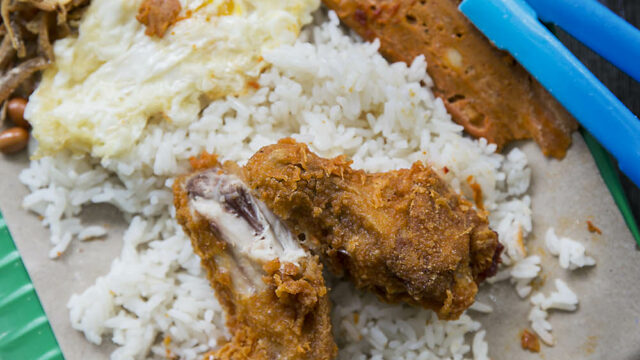
There are three types of roast duck in Chinese cuisine. The most famous is Peking duck where the emphasis is on the crispy skin that is eaten with pancakes, spring onions and cucumber. The most common is roast duck which is the one we find at most Cantonese roast stalls. Here the emphasis is on (or should be on) the flavourful meat. Then, there is the less commonly available Pipa duck where you get the both flavourful meat and the crispy skin.
To achieve this special texture, the duck is splayed open and flattened before marinating. This transforms the duck into a shape resembling that of the ancient Chinese musical instrument from which it derives it’s name. This technique increases the surface area of the duck which reduces the cooking time and also ensures a more even distribution of the marinade as well as heat.
As you can imagine, it takes more effort to make Pipa duck, which is why you only really see it in restaurants rather than your friendly neighbourhood Cantonese roast shop!
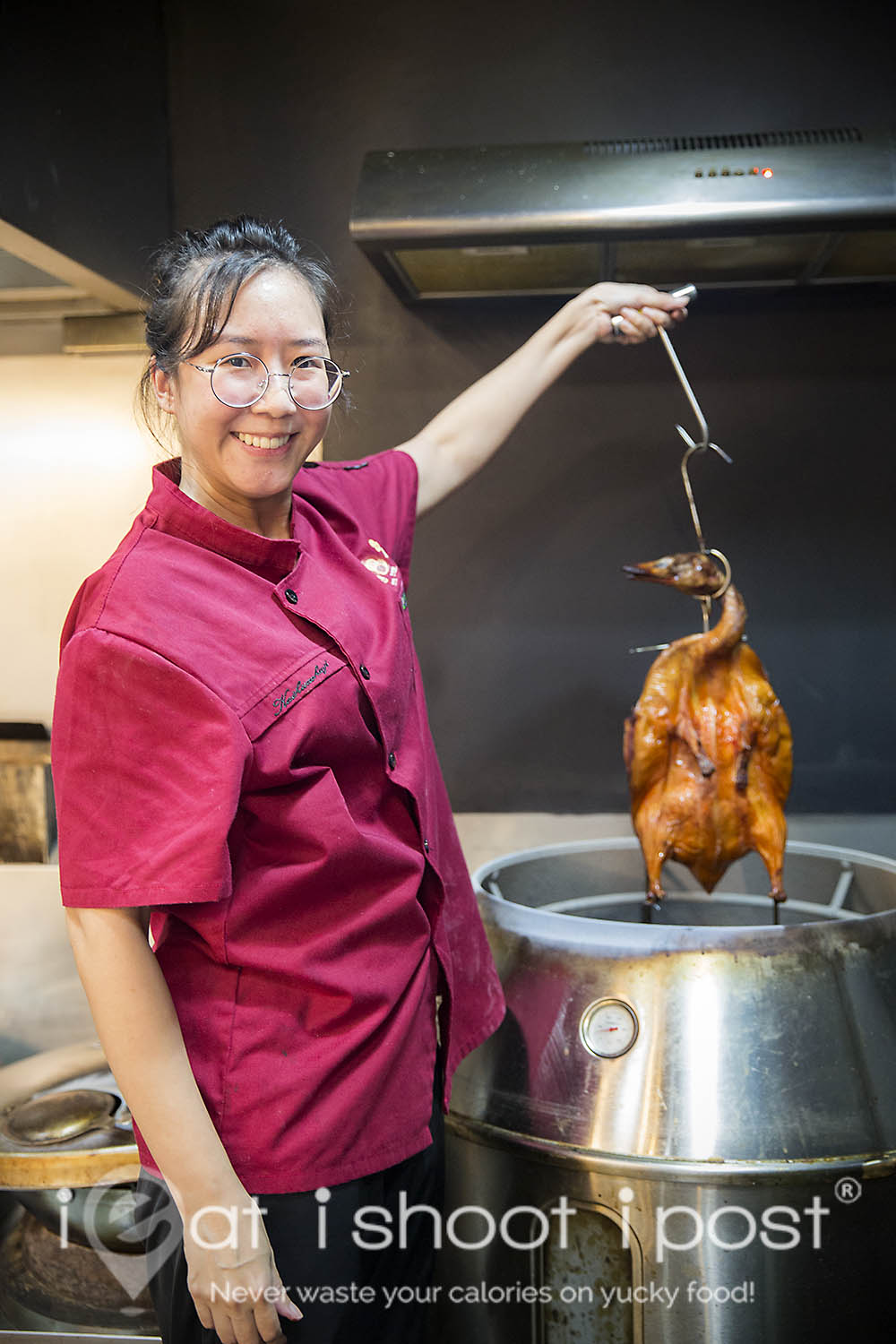
The good news is that we now have a young lady hawkerpreneur who has taken up the challenge of mastering the art of the Cantonese Roast and making Pipa duck readily avaialable to the masses.
Sharon seems to be the most unlikely of persons to take on a job like this. An economics graduate of NUS, she found her real calling in front of a charcoal oven. I am not trying to disparage women, but this type of work requires quite a bit of elbow grease and having to face the heat of a charcoal oven can be quite stifling.
Handling and chopping the duck after roasting also requires a strong arm, and I can’t help but smile while observing Sharon in her oversized chef uniform welding the chopper. It’s like watching my young daughter learning to kick a football! But you have to give it to her, she’s really got the gumption to make it work and the end product speaks for itself. Give her some time, and she would join the ranks of lady roasters like Kay Lee and Mei Mei!

The pipa duck is very good. The skin is crispy and the meat is well marinated and flavourful. It would be even better if they used a larger size duck so that the meat is slightly thicker and juicier. 4.25/5
The roast duck here is very good and a little different from the usual ones you find at the local Cantonese roast shop. First of all, they use a wet marinade which is cooked first before being stuffed into the cavity. They also don’t use any coloring on the skin, so it looks paler than what we are used to. Sharon’s sifu, James learnt the recipe from a champion Hong Kong roast chef over three decades ago and he tells me that this is the original way of making roast duck.
What I like about the duck is the tasty seasoning and I enjoy savouring those pieces next to the cavity and especially near the back side where all the juices gavitate to when the duck is roasting! It reminded me of the Hong Kong style roast duck sold in Eastwood, Sydney! (Eastwood is a suburb in Sydney where you find lots of Hong Kong eateries on one side of the railway station and Korean eateries on the other! I used to live there during my University days) 4.25/5
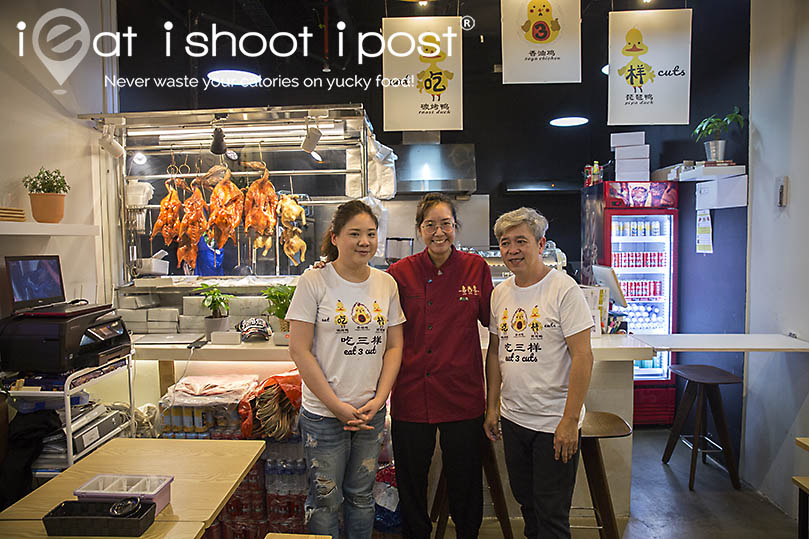
Conclusion
Promising new next generation roast shop serving roast and pipa duck prepared the old school way. The old roasting method is more labourious which is why many opt for the simpler modern technique. But as they say, there is “no school like the old school” and in the case of roast duck, old school still beats the new school!



